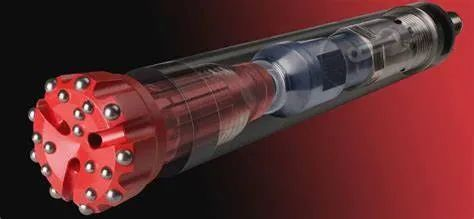- Concept, Phenomena and Hazards of WOB Transfer Loss
Concept: During drilling, excessive friction between the drill string and wellbore wall prevents the weight on bit (WOB) from being transmitted to the drill bit—instead, the entire WOB is consumed by the drill string. This manifests as no penetration rate despite increased WOB, no back pressure, and low torque. The solution involves reducing rotational speed and gradually increasing WOB (while ensuring compliance with the drill string’s compressive strength) until torque suddenly rises and back pressure on WOB appears. After drilling each single joint, repeated reaming and backreaming are required before connecting the next joint or stand.
Phenomena and Hazards: This issue primarily occurs during reverse-circulation directional drilling in vertical wells, window-milling and sidetracking directional operations, and horizontal well directional drilling. It disrupts normal directional construction and may lead to pipe sticking if operations are improperly conducted.
2. Analysis of Causes
Poor Wellbore Trajectory: Deviations in wellbore trajectory (caused by formation conditions or construction errors) often require reverse-circulation adjustments. High build rates (more common in medium/short-radius horizontal wells than long-radius ones) and irregular trajectories, combined with the rigidity of the drill string, cause the drill string to rest against the wellbore wall when pressure is applied—triggering WOB transfer loss. The additional pulling force during tripping after pressure application is similar to normal levels and usually does not exceed the downward pressure.
Contaminated Wellbore (Cuttings Bed Formation): Cuttings removal is challenging in directional wells and horizontal wells with a well deviation of 45–90 degrees. In hard formations (e.g., Shahejie and Kongdian formations), cuttings easily accumulate into beds. These beds increase sliding friction between the drill string and wellbore wall, leading to WOB transfer loss.
Thick and Loose Mud Cake, High Mud Friction Coefficient: High solid content in mud results in thick, loose mud cakes, which expand the contact area with the drill string and raise the risk of sticking. A high mud friction coefficient increases the drill string’s sliding resistance. This scenario may cause sudden pump blocking when WOB is increased (e.g., to 30 tons), with the additional pulling force exceeding the downward WOB.
3.Mitigation Measures
Wellbore Trajectory Control and Drill String Optimization: Implement full-well guided drilling to avoid trajectory deviations requiring reverse-circulation adjustments. Simplify the drill string configuration (reduce drill collars, increase heavy weight drill pipes) to lower rigidity and minimize contact with the mud cake, preventing WOB transfer loss and sticking.
Enhanced Wellbore and Mud Purification: Use solids control equipment to purify surface mud. Ensure sufficient displacement (no less than 3.4 m³/min for φ311 well sections, 1.1 m³/min for φ216 sections) and adjust mud rheological parameters (YP/PV ratio: 0.42–0.50; viscosity: ≥48 s) to improve cuttings-carrying capacity. For horizontal wells, ream to 20–30 degrees of deviation to break up cuttings beds.
Improve Mud Lubricity and Mud Cake Quality: Add 3–5 tons of crude oil (not exceeding 10%) combined with water-based lubricants to balance lubricity and mud cake quality. Incorporate sulfonated asphalt or phenolic resin to optimize mud cake properties. For WOB transfer loss in hard formations, add 200–300 kg of expanded graphite or extreme-pressure lubricants to reduce friction.
Contact :Bree Zhang
Mobile/Whatsapp:+0086-183 9206 9193
Email: landrill@landrilltools.com
Web: www.landrilltools.com
Post time: Sep-11-2025









 5-1203 Dahua Digital Industrial Park Tiangu 6th Road,Hi-tech development Zone Xi'an, China
5-1203 Dahua Digital Industrial Park Tiangu 6th Road,Hi-tech development Zone Xi'an, China  86-13609153141
86-13609153141 

